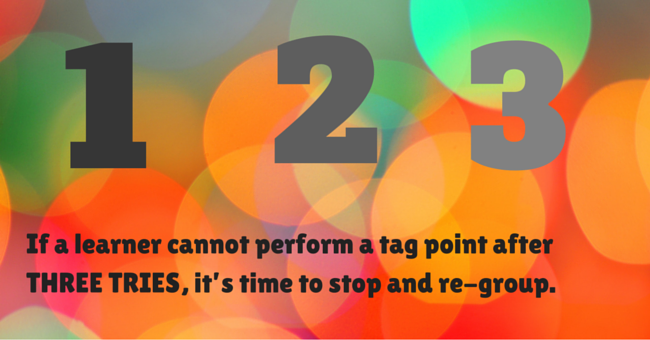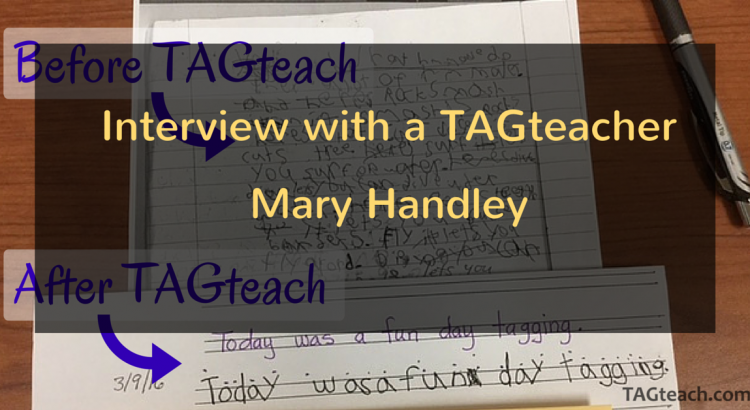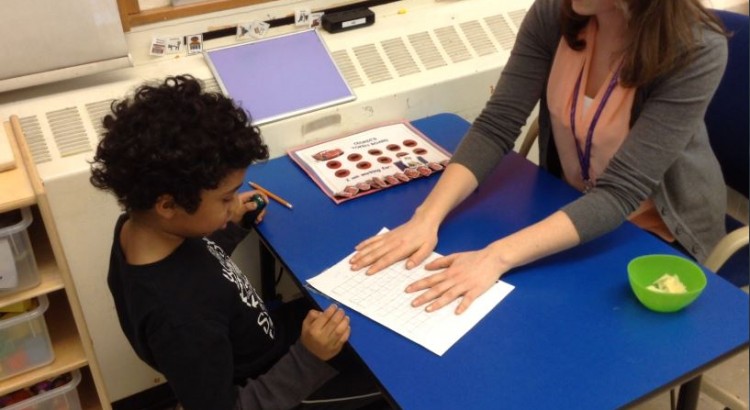By Joan Orr M.Sc., TAGteach Cofounder
How do you feel when you try something and make mistakes over and over? How do you feel when it seems that you are disappointing the person trying to teach you? Do you feel energized and excited to be “learning from your mistakes” or do you feel frustrated and discouraged? Do repeated failure and “just one more”s make you anxious, frustrated and wanting to escape to do something less stressful?
Sometimes the result of too much pressure to try something too hard results in a full-on meltdown or a complete shut down of the learner. Once this happens, there is no more learning.
This is why we suggest the three try rule. If a learner fails three times (or fewer) to meet the specific learning goal (the tag point), go to a past point of success and move forward in smaller increments.
A point of success is something earlier in the learning process that you are 100% sure the learner can get right. By starting at a point of success and moving forward in small steps you build on existing success instead of searching blindly for a good starting point. Of course the ‘three try rule’ isn’t really a rule. The learner doesn’t HAVE to fail three times. If it is clear the learner will not likely achieve the tag point criterion after the first failure, or the learner is very sensitive to failure, jump right in and break the skill down further and change the tag point.







